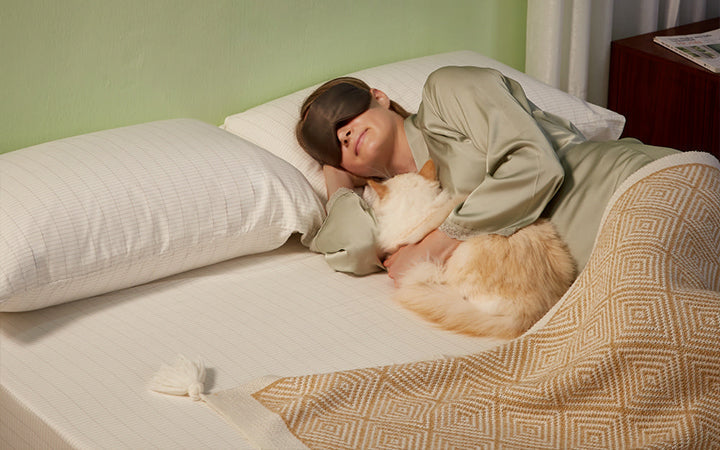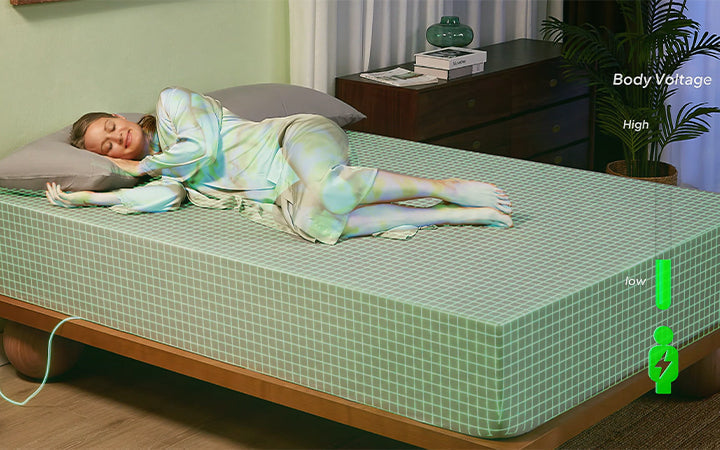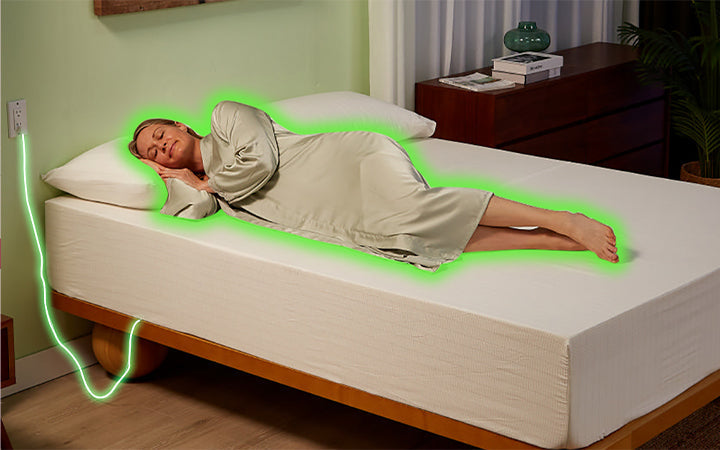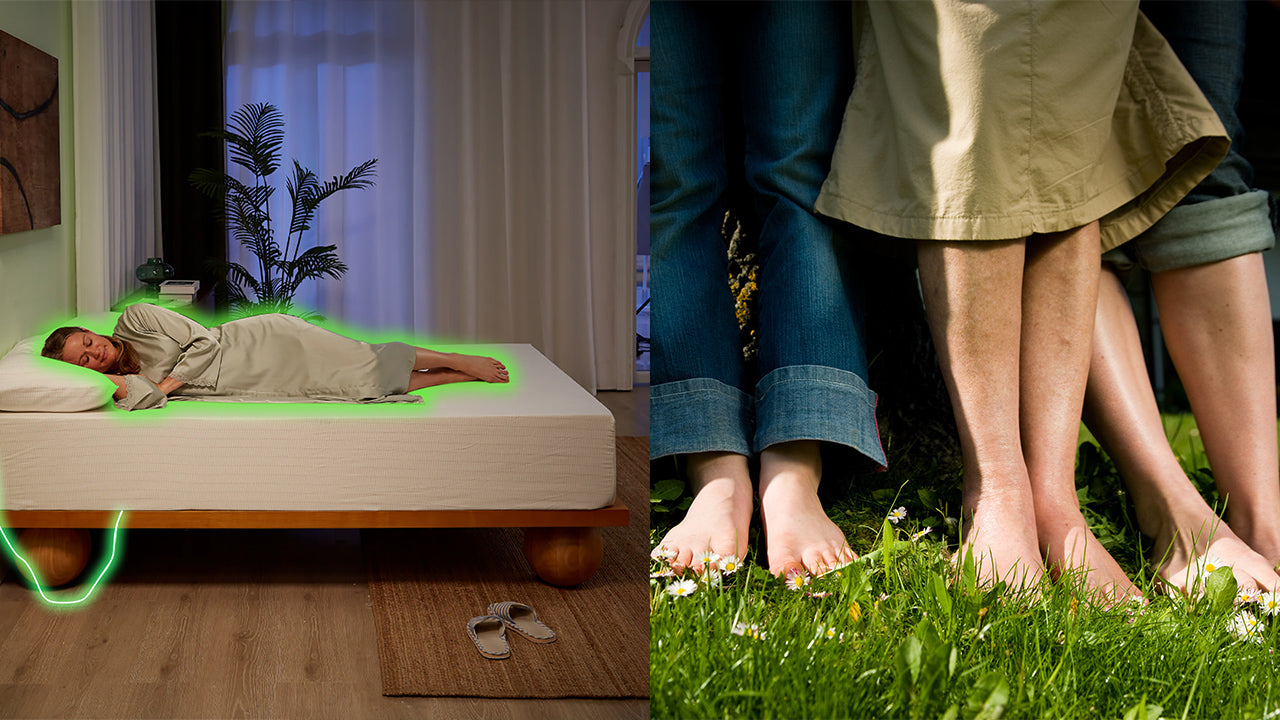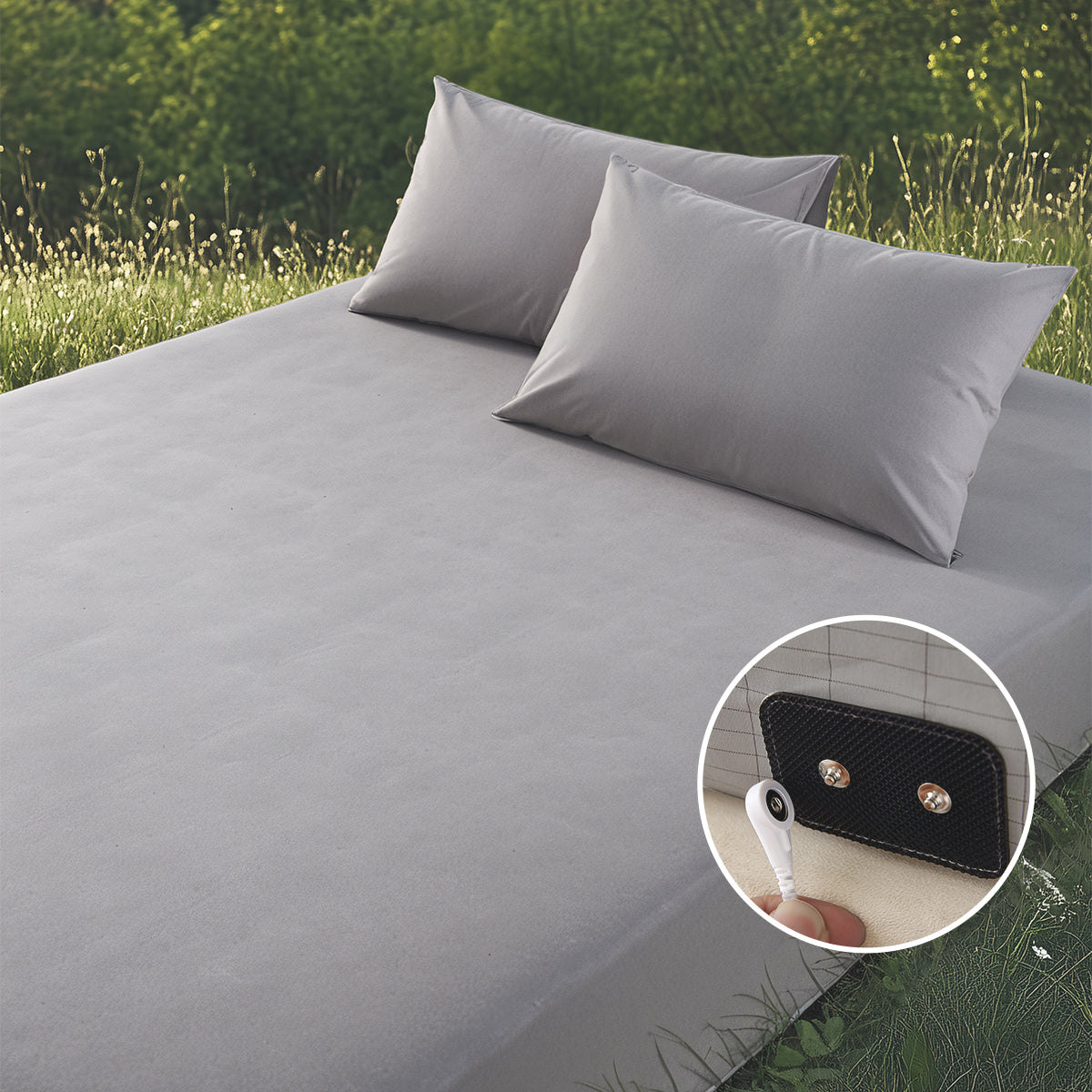Bamboo vs. Cotton in Grounding Sheets: A Deep Dive into Conductivity, Comfort, and Sustainability
If you're looking into grounding sheets, the fabric they are made from is an important choice that goes beyond just how it feels. This article compares bamboo and cotton, two common materials for bedding, to help you decide which might be a better base for your grounding sheet. We'll look at how each material relates to conductivity, comfort, and its environmental impact.

How Grounding Sheets Conduct Energy
The main job of a grounding sheet is to help you connect with the Earth's natural energy. This connection happens because of conductive materials in the sheet. It’s key to know that neither bamboo nor cotton fibers are naturally conductive enough on their own to do this job effectively. Instead, they serve as the comfortable base material that holds the conductive parts.
The Role of Conductive Threads
Grounding sheets work because of a network of special threads woven into the fabric. These threads are what actually conduct the Earth's energy.
- Silver Threads: Silver is very common because it’s highly conductive. Not only that, silver nanoparticles also have antibacterial properties, which can help keep your bedding cleaner by discouraging bacteria.
- Carbon Threads: Carbon is another material used for these conductive threads. It’s effective for grounding and can be a less expensive option than silver. Carbon fibers are also light and durable.
- Stainless Steel Microfibers: These are less common in sheets but offer good conductivity and are very durable. However, their texture might be noticeable if the fibers aren't very fine.
Bamboo Fabric as a Base
Bamboo fabric, often the rayon or viscose type made from bamboo, works well for holding these conductive threads. How well the threads are integrated depends on the manufacturing quality. Bamboo naturally wicks moisture, and this can be a plus. A little moisture from your skin or the air can help create a better connection between your body and the conductive threads.
Cotton Fabric as a Base
Cotton fabric is also a good base for conductive threads. Like bamboo, how well it holds the threads comes down to manufacturing. Cotton is known for absorbing moisture. This absorbency can also help with conductivity, as it can take up slight sweat, potentially improving the electrical pathway to the conductive threads.
What Really Matters for Conductivity
When it comes to how well a grounding sheet conducts energy, the most important thing isn't whether the base fabric is bamboo or cotton. What matters most is the quality, type (like silver), and amount of conductive threads woven into the sheet. If you have a bamboo sheet and a cotton sheet with the exact same conductive threading, they should be equally effective at grounding. The choice between bamboo and cotton mainly affects other things like comfort and how you care for the sheet.
Comfort of Grounding Sheets: Bamboo vs. Cotton
For a grounding sheet to be part of your daily routine, it has to feel good to sleep on. Bamboo and cotton each have a distinct feel and behave differently when it comes to softness, breathability, and how they handle moisture.
How Bamboo Feels
Bamboo fabric, especially the common rayon or viscose type, generally feels very soft and smooth. Some people describe it as silky. This can make it a nice option if you have sensitive skin.
It’s also quite breathable and good at adjusting to temperature – helping you stay cool when it's warm and providing some warmth when it's cool by wicking moisture away from your skin. It drapes softly. One thing to note: while bamboo is often called hypoallergenic, the chemicals used to make rayon/viscose can sometimes irritate very sensitive skin unless the product is certified free of harmful residues.

How Cotton Feels
Cotton is a familiar choice for bedding. Its comfort can vary a lot, depending on the type of cotton (like Pima or Egyptian) and how it's woven. Good quality cotton usually means softer and more durable sheets.
Cotton is naturally breathable. It’s also very absorbent, which is good for drawing sweat away from your skin. However, if there's a lot of moisture, cotton can feel damp and take a while to dry. Different cotton weaves also offer different textures; for example, percale feels crisp, while sateen is smoother.
A Note on the Conductive Threads
You might wonder if you can feel the conductive threads. In most well-made grounding sheets, these silver or carbon threads are very fine and woven in so smoothly that you won't notice them. If the threads feel rough, it's usually due to lower quality manufacturing, not the fabric type itself.
Which is More Comfortable?
So, which is better? Many find bamboo (rayon/viscose) to be softer and silkier, and appreciate how it manages temperature and moisture. Cotton offers a more traditional feel that can be very comfortable, with options for crispness or cozy softness. Since the conductive threads shouldn't be an issue in a quality sheet, the choice really comes down to your personal preference for the fabric's feel.
Grounding Sheets & Sustainability: Bamboo vs. Cotton
More and more, people want to know about the environmental footprint of their purchases. When we look at bamboo and cotton, the sustainability story is not simple.
Bamboo: Fast Growth, Chemical Processing
Bamboo's eco-friendliness depends on how it's grown versus how it's processed.
Growing bamboo offers several benefits: it's fast-growing, often needs no pesticides or much fertilizer, generally uses less water than conventional cotton, and regrows after harvesting, which helps soil health.
However, turning bamboo into fabric is its main environmental challenge. The common process for creating soft bamboo rayon or viscose uses strong chemicals. These can pollute water and air unless managed in a "closed-loop" system that captures and reuses them. Greener processing methods like the lyocell process or mechanical methods (for bamboo linen) exist but are less common and costlier for sheets. Additionally, since most bamboo is grown in Asia, shipping adds to its carbon footprint, and large bamboo monoculture farms can reduce local biodiversity.
Cotton: Conventional vs. Organic Farming
Cotton's environmental impact largely depends on its farming method.
Conventional cotton farming usually requires significant water for irrigation and relies heavily on pesticides and chemical fertilizers. These practices can harm the environment, degrade soil, and affect water sources.
Organic cotton, however, is grown differently, avoiding synthetic pesticides, herbicides, and GMOs. Organic methods build soil health and typically use less water, often relying more on rainfall. This makes organic cotton a much better environmental choice, despite potentially higher costs and lower yields than conventional cotton. Initiatives like the Better Cotton Initiative (BCI) also work to make conventional cotton farming more sustainable.
Sustainability: What to Look For
So, which is more sustainable? It’s complicated.
- Bamboo (Rayon/Viscose): It grows well with few resources, but the chemical processing for rayon/viscose is a big concern unless the company can show they use safe, closed-loop methods.
- Conventional Cotton: Generally has a poor environmental record due to water and pesticide use.
- Organic Cotton: Is a much better environmental choice than conventional cotton.
When buying, brand transparency is important. Seek information on material origins and processing. Certifications are helpful:
- GOTS (Global Organic Textile Standard): A top standard for organic textiles, including social criteria.
- OEKO-TEX Standard 100: Shows the product is tested for harmful substances (relevant for bamboo processing and cotton dyes/finishes). The GroundingTime Bamboo Grounding Fitted Sheet, for instance, has achieved OEKO-TEX Standard 100 certification, assuring it's free from harmful substances and safe for sensitive skin.
- FSC (Forest Stewardship Council): Indicates bamboo sourced from responsibly managed forests.
These certifications offer valuable guidance when you are looking for more sustainable products. Your careful attention to such details can support the broader shift towards more environmentally responsible textile production.
Grounding Sheets: Care, Cost, and Skin Sensitivity
Besides how they perform for grounding, comfort, and sustainability, here are a few other things to think about.
Durability and Washing
Durability and ease of care are important. Bamboo (rayon/viscose) sheets are often more delicate, requiring gentle cool washes and low heat or line drying to prevent pilling or shrinking. High-quality cotton is typically more durable and tolerates more robust washing. For any grounding sheet, conductive threads mean you should always check the manufacturer's label, especially regarding bleach or fabric softeners.
Cost
Prices for grounding sheets vary. Bamboo options are often premium-priced, comparable to or sometimes more than good quality cotton. Cotton sheets span a wider range, from budget-friendly to luxury (like organic Egyptian cotton), with costs reflecting fabric quality, conductive thread type, and certifications.
Skin Sensitivity
If you have sensitive skin or allergies, fabric choice matters. Bamboo is often called hypoallergenic due to natural antimicrobial properties, but confirm its processing (e.g., OEKO-TEX Standard 100 certification for rayon/viscose) is safe for you, as briefly touched on in the comfort discussion. Organic cotton is generally excellent for sensitive skin, being naturally soft and free from harsh chemical residues.

Subject Perspective & Key Considerations for Your Grounding Sheet Choice
When choosing a grounding sheet, a "subjective experience" comparison highlights specific aspects:
- Grounding Performance: Regardless of whether the base fabric is bamboo or cotton, the grounding performance primarily depends on the quality and quantity of the conductive threads. Subjects emphasize paying close attention to the selection of conductive materials.
- Comfort and Preference: Subject experiences indicate that bamboo fibers offer superior softness and temperature control, while cotton fibers provide a more traditional comfort and diverse textural experience. GroundingTime's grounding fitted sheets, for instance, are meticulously crafted from eco-friendly, sustainable bamboo fibers and a golden ratio blend of conductive silver fibers (90% bamboo fiber + 10% conductive silver fiber), resulting in a soft, breathable, and skin-friendly texture that many subjects highly praise for comfort.
- Environmental Considerations and Brand Transparency: For users focused on sustainability, products with environmental certifications (such as OEKO-TEX Standard 100 or GOTS certification) are the preferred choice, offering peace of mind regarding responsible production.
Focus Your Grounding Sheets Choice on What Matters!
Both bamboo and cotton work equally well for grounding since conductivity depends on the conductive threads, not the base fabric. Your choice should focus on personal preferences: bamboo offers silky comfort and moisture-wicking, while cotton provides familiar feel with organic options being more sustainable. Consider your skin sensitivity, care preferences, budget, and environmental values to determine which material best suits your needs.
Not sure where to start? → Try this grounding guide for beginners.
